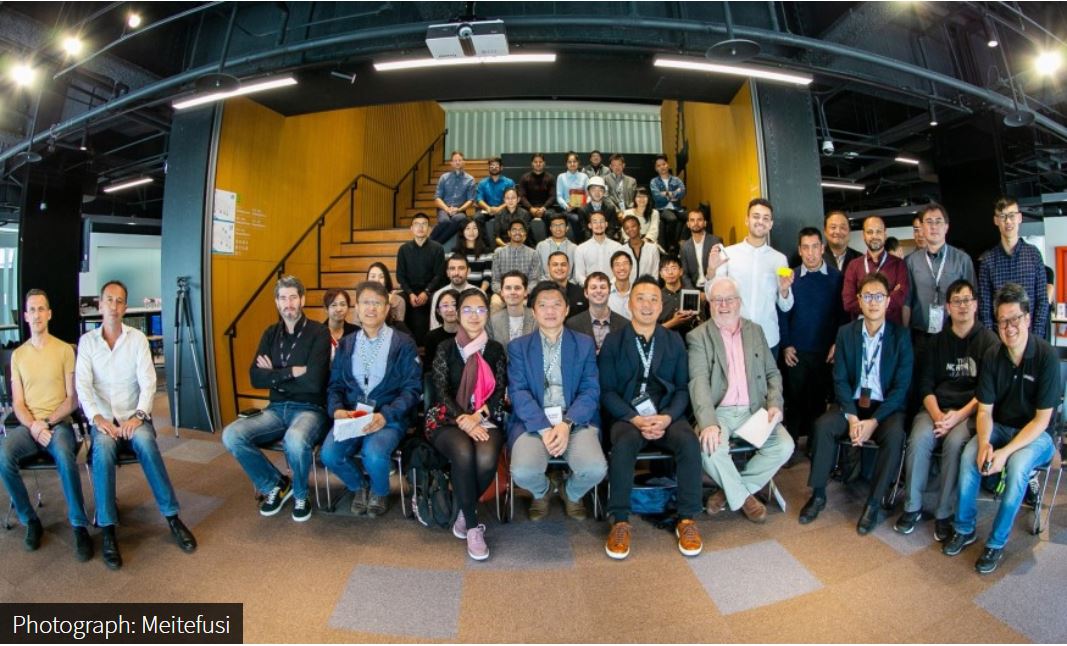Sigfox Hacking House Taipei: eCap, wearable device provider for construction workers, bags first prize at demo day, among four international teams

Organized by UnaBiz, the demo day for the second season of Hacking House Taipei took place at Taiwan Tech Arena last Friday, featuring four teams and 20 international students who leverage Sigfox’s 0G technology to cope with issues plaguing agriculture, logistics, construction work and the public sector.
Hacking House is a global IoT training and entrepreneurship mentoring program launched by French IoT unicorn Sigfox as an effort to address real life problems with innovative prototypes and solutions.
The Taipei Season 2, the fifth batch across the globe after that in San Francisco, Taipei, Paris, and Chicago (in order), attracted over 100 applications from around the world. A total of 25 applicants, mostly students, were eventually selected and assigned to four teams to solve different issues in three months with the Sigfox 0G network, a low-power wide area network (LPWAN) interconnecting low-bandwidth, battery powered devices with low bit rates over long ranges.
The first place goes to eCap, a team developing a bluetooth-enabled wearable to improve safety at construction sites. With devices connected to a bluetooth transmitter, the system control center is able to respond spontaneously to any accidents, determining where they happen and carrying out rescues accordingly.
Following eCap is Factum, a team innovating the logistics industry with its method to sense when a container is unsealed during transportation and thus improve the transparency in shipping.
Pay X comes up with a system that allows mail carrier to track when a letter is dropped into the post boxes within their district; it not only keeps them from checking empty ones but optimizes their route for mail collection.
Seeing the production of coffee beans in Central America threatened by outbreaks of coffee leaf rust, Coffeeye develops an early detection system that prevents the destructive fungus from spreading throughout the fields.
The above four teams pitched in front of a jury consisting of industry experts and mentors, including some from STMicroelectronics (semiconductor manufacturing company), Taipei Co Space (co-working space), and IAPS NCTU (startup accelerator), who have sponsored the program.
The audience included foreign government officials and scholars from technical universities such as NCTU (National Chiao-Tung University) and NTUST (National Taiwan University of Science of Technology).
“It’s incredible to have such a supportive ecosystem here where government agencies, academics and the industry work together to create such an unique program in Taiwan, and conducive for foreign talent looking for vocational and entrepreneurial path,” said Philippe Chiu, CTO and co-founder of UnaBiz. He described the program as a “launchpad for ‘Technopreneurs’ who wish to launch IoT startups in Taiwan.”
Neil Chuang, Marketing Manager at STMicroelectronics, said: “The Hacking House Taipei Season 2 took place in a very important period for the global Sigfox ecosystem, as the new generation of the Sigfox semiconductor solution, called Monarch, is now available for IoT devices that can roam in any of the 67 countries where the Sigfox network is currently deployed."
“We are pleased to see the growing ecosystem around our first Hacking House's franchise managed by UnaBiz with leaders in their area such as STMicroelectronics, Trisco, Might Electronic or IAPS of NCTU,” said Maxime Schacht, Head of Hacking House program. “In just a few years the Hacking House has proven to be one of the world's leading IoT incubation programs. The results of this new batch in Taipei prove once again the talent and agility shown by the participants in solving complex business problems in a short period of time.”
〔Original :Meet Startup @ TW〕
https://meet.bnext.com.tw/intl/articles/view/45980